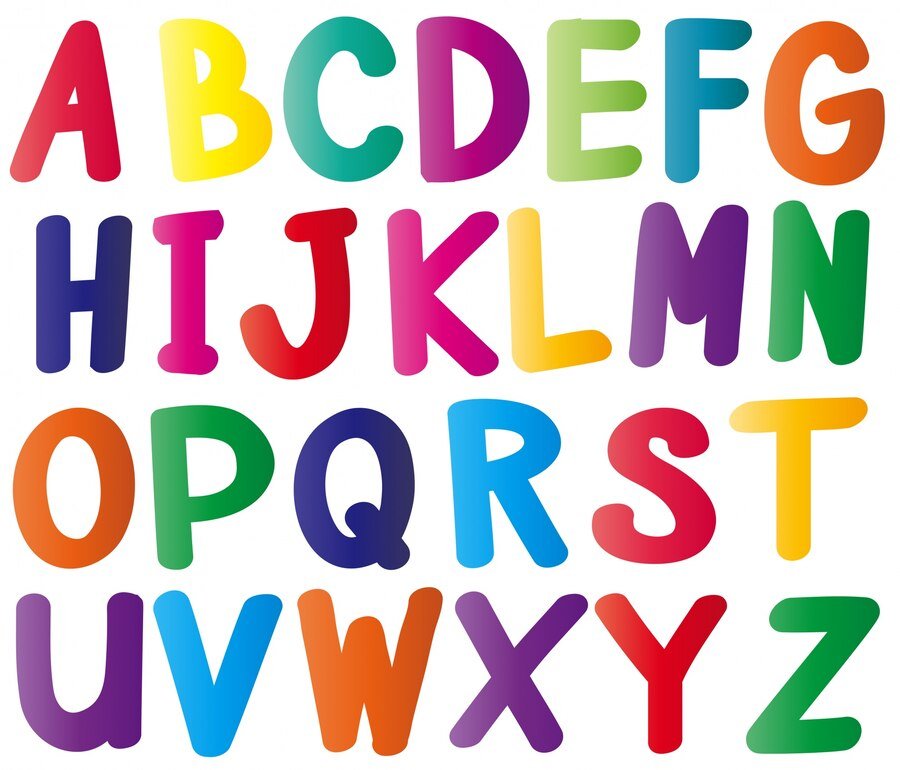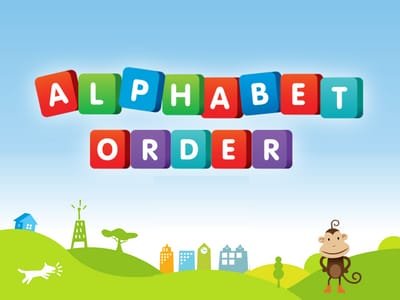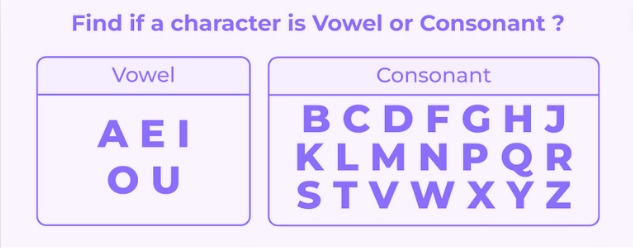Did you know the English alphabet has 26 letters, each with its shape, sound, and role? This guide will take you from “A” to “Z.” It’s perfect for both native speakers and those learning English. You’ll get a strong base in reading and writing the English language.

English Alphabet Letters
Key Takeaways
- The English alphabet consists of 26 letters, from A to Z.
- Understanding the order, sounds, and uses of the alphabet is crucial for literacy and language learning.
- Mastering the alphabet is the foundation for spelling, word formation, and effective communication in English.
- Alphabet songs, mnemonics, and learning activities can help reinforce letter recognition and phonics skills.
- Exploring the history and evolution of the English alphabet provides valuable context for its modern-day usage.
Introduction to the English Alphabet
The English alphabet is key to our written language. It has 26 letters that help form words, sentences, and how we communicate. Knowing the basics of the alphabet is vital for learning to read, write, and communicate well in English.
Importance of Alphabetic Literacy
Learning the letters, their names, and sounds is a big step in reading and writing. Alphabetic literacy skills help people decode words and recognize them. This skill is the base for more advanced language skills like spelling, building vocabulary, and understanding reading.
Brief History of the English Alphabet
The English alphabet comes from the Latin alphabet, brought to Britain by the Romans in the 1st century AD. It has changed over time, taking in influences from languages like Anglo-Saxon, Old English, and Norman French. Today’s 26-letter English alphabet shows how the language has adapted and changed.
Knowing the letters of the alphabet, their sequence, and both uppercase and lowercase forms is key for basic language skills. Understanding the English alphabet’s structure and history helps us see why alphabetic literacy is important. It’s crucial for language learning and communication.
What are the Alphabet Letters in English?
The English alphabet is key to the language, made up of 26 unique letters. These letters are the base for words, spelling, and writing. From A to Z, each letter is vital, with its sound and purpose.
The 26 letters of the English alphabet are:
- A, B, C, D, E, F, G, H, I, J, K, L, M
- N, O, P, Q, R, S, T, U, V, W, X, Y, Z
These letters follow a specific order called the alphabetic order. This order is key for organizing info, making dictionaries, and filing systems.
| Letter | Name | Sound |
|---|---|---|
| A | Ay | /æ/ |
| B | Bee | /b/ |
| C | See | /k/ |
| D | Dee | /d/ |
| E | Ee | /i/ |
Knowing the English alphabet and its sounds is key for reading, talking, and enjoying written words. It helps with literacy, communication, and understanding the language’s depth.

Alphabet Order
Learning the Alphabet Order
Learning the alphabet from A to Z is key for reading, writing, and other language tasks. There are great tools to help you remember this important sequence. These include alphabet songs and mnemonics.
Alphabet Songs and Mnemonics
Alphabet songs are a fun way to learn the abc order. They are catchy tunes set to familiar tunes that stick in your mind. Kids love these songs because they’re fun and easy to remember.
Mnemonics are also great for learning the alphabet. They are memory aids like rhymes or pictures that help you remember the letters. These techniques make it easier to recall the letter order.
- The classic “Alphabet Song” has helped many learn the abc order.
- Mnemonics like “A apple, B-boy, C cat” link letters to familiar things.
- Rhymes like “All Bugs Climb Deftly, Every Frog Gobbles Honey” help remember the alphabetical sequence.
Using these fun methods, people of all ages can easily remember the letter sequence. This is a strong start for reading, writing, and language skills.
“Mastering the alphabet is the first step towards unlocking the vast world of language and literacy.”
Vowels and Consonants Explained
The English alphabet has both vowels and consonants. Each type is key to the language. Knowing the difference helps with spelling, pronunciation, and language skills.
Vowels include a, e, i, o, and u, and sometimes y. They make up the core of a syllable and sound smooth. Vowels are crucial for correct letter sounds and spelling.
Consonants are all the other letters. They start or end syllables and make more blocked sounds. Consonants are important for word formation and phonics instruction. They shape words’ structure and how they sound.
| Vowels | Consonants |
|---|---|
| a, e, i, o, u (and sometimes y) | All other letters in the alphabet |
| From the nucleus of a syllable | Start or end a syllable |
| Produce a continuous, unobstructed sound | Produce a more obstructed or interrupted sound |
Vowels and consonants work together to shape the English language. Understanding their roles helps with letter names, letter sounds, and spelling. This knowledge is key for phonics instruction and growing vowel and consonant skills.

vowels and consonants
“The English alphabet is a remarkable tool, with vowels and consonants working together to create the rich tapestry of our language.”
Uppercase and Lowercase Letters
The English alphabet has both uppercase (capital) and lowercase (small) letters. These letters have different roles in writing English. Knowing how to use them right is key for clear communication.
Proper Use of Capitalization
Capitalization is important in writing. It helps show proper nouns, the start of sentences, and titles. Here are some rules for using capital letters correctly:
- Start sentences with a capital letter.
- Use capital letters for proper nouns like names of people, places, groups, and events.
- Put a capital letter at the start of titles or headings.
- Always capitalize the pronoun “I” and the interjection “O” in writing.
Using uppercase and lowercase letters correctly shows you’re professional, detail-oriented, and know your language basics. It makes your writing look better.
Knowing the difference between uppercase and lowercase letters helps writers make their work clear and easy to read. Using capitalization right makes your writing more effective.
Letter Sounds and Pronunciation
Learning the sounds and pronunciation of English letters is key to improving language. Each letter has its sound, which is important for reading, writing, and spelling well.
Vowels are crucial for pronunciation. For example, ‘a’ can sound short like in ‘cat’ or long like in ‘cake.’ ‘I’ can sound short in ‘sit’ or long in ‘kite.’ Knowing these vowel sounds is vital for phonics instruction and language learning.
Consonants also play a big part in how letters sound. Letters like ‘b,’ ‘c,’ and ‘d’ have unique sounds that help with spelling and word formation. Getting these consonant sounds right helps learners understand letter sounds and the pronunciation of alphabet letters.
| Vowel Sound | Short Example | Long Example |
|---|---|---|
| A | Cat | Cake |
| E | Bed | Seed |
| I | Sit | Kite |
| O | Pot | Rope |
| U | Mud | Flute |

Getting the letter sounds and pronunciation of alphabet letters right is key to phonics instruction and language learning. By knowing the sounds each letter makes, people can improve their spelling and enjoy the English language more.
Alphabet Letters in Context
The English alphabet’s letters don’t stand alone; they form the base of our language. This part looks at how letters in English work together in spelling and making words. It shows their key role in the language basics.
Spelling and Word Formation
Good spelling is key to writing well; it starts with knowing how letters and words connect. Each letter makes a sound or sounds, which make up words. This is the basis of word formation.
Learning how letters combine is vital for spelling right. From simple to complex words, the letters in English help form the words we use daily.
- The 26 letters of the alphabet, when combined, form the vast majority of words in the English language.
- Understanding the basic principles of letter patterns and word formation can greatly improve one’s spelling abilities.
- Exploring the relationship between letters and the words they create is a fundamental aspect of language basics.
Seeing the importance of alphabet letters helps us value spelling and word formation more. This knowledge boosts our writing skills and lays a strong base for more language study.
Teaching the Alphabet to Children
Learning the alphabet is key to a child’s language-learning journey. It sets a strong base for letter recognition and early phonics instruction. Parents and teachers play a big role in helping kids become alphabetic literate.
Alphabet Learning Activities
Fun alphabet learning activities make learning letters enjoyable. Here are some great ways to teach the alphabet:
- Sing alphabet songs and recite alphabet rhymes to help kids remember the letters.
- Use hands-on manipulatives, like magnetic letters or foam shapes, for a hands-on learning experience.
- Do letter-themed craft projects, letting kids create their letter models.
- Play letter recognition games, such as “I Spy” or letter-matching, to help kids identify letters.
- Read alphabet-focused storybooks that make learning letters fun through stories.
Using a mix of alphabet learning activities helps reach different learning styles. It keeps kids interested and motivated in learning the alphabet.
| Activity | Description | Benefits |
|---|---|---|
| Alphabet Scavenger Hunt | Children look for objects that start with a certain letter at home or in class. | Improves letter recognition, phonics skills, and observation. |
| Alphabet Arts and Crafts | Kids make art, like collages or sculptures, that show the letters of the alphabet. | Boosts creativity, fine motor skills, and visual awareness. |
| Alphabet Bingo | A bingo game twist where players match letter tiles or cards to a board. | Helps with letter identification, listening, and social skills. |
With a variety of alphabet learning activities, you can help kids with letter recognition, phonics instruction, and language learning.
Alphabetical Order and Its Applications
The English alphabet’s order is more than just memorizing letters. It’s key for organizing info, finding things in books, and sorting data. This section looks at how the alphabetical sequence helps us every day.
Alphabetical order helps us use dictionaries, phone books, and other references. It makes finding things quick and easy. This is vital for learning languages and doing basic research.
Alphabetical order is also crucial in offices and professional settings. It keeps files, lists, and databases tidy and easy to find. Companies and organizations use it to manage their documents and data well.
Education also uses the alphabetical sequence. Teaching the alphabet and spelling often involves alphabetical order. Teachers use it to help students grasp language basics and improve reading and writing.
In summary, the alphabetical order of English letters is vital. It helps with everything from personal references to professional data management. This system is a big part of our daily lives and learning.
| Application | Example |
|---|---|
| Dictionaries and reference materials | Locating words and information quickly |
| Filing and record management | Organizing business documents and contacts |
| Educational tools | Teaching the alphabet and spelling skills |
The Evolution of the English Alphabet
The English alphabet has a long and interesting history. It has changed over many centuries, influenced by different languages and writing systems. This story shows how our 26-letter system today came from the past. It highlights the history of the English alphabet and language basics.
The English alphabet started with the ancient Phoenician script. This script helped create the Greek and Latin alphabets. These alphabets then spread across Europe, changing and adapting along the way. This led to the letters we know today.
A big step in the history of the English alphabet was when the Roman alphabet came to Britain in the 1st century AD. This brought new letters and ways of writing. These mixed with the Anglo-Saxon runes, creating the early English alphabet.
Over time, the language basics of the English alphabet kept changing. Foreign words and regional dialects had a big impact. The Norman Conquest in the 11th century, for example, brought French letters and spellings to English.
| Timeline | Key Developments |
|---|---|
| Ancient Phoenician Script | Lays the foundation for the Greek and Latin alphabets |
| Roman Occupation of Britain (1st century AD) | Introduction of the Roman alphabet and its integration with Anglo-Saxon runes |
| Norman Conquest (11th century) | French-derived letters and spellings were introduced, further shaping the English alphabet |
| Modern Era | Continued refinement and standardization of the English alphabet |
Today, the history of the English alphabet and language basics are still changing. New trends, technology, and global culture are all playing a part. The English language keeps growing, and the alphabet remains a key tool for talking to each other. It shows the rich history of our language.
Conclusion
In this guide, we’ve looked at the 26 letters of the English alphabet, from A to Z. We’ve seen how important knowing the alphabet is and its long history. We’ve covered the basics of English, like vowels and consonants, and how to use uppercase and lowercase letters.
Knowing the alphabet is key for anyone, whether you’re a native speaker or learning English. This guide has given you a strong base for understanding the what are the alphabet letters in English?, letters in the alphabet, ABC order, and alphabetical sequence.
As you keep learning about the learning the alphabet, pronunciation of alphabet letters, and alphabetical order, remember the basics. The vowels and consonants, letter names, and letter sounds are crucial for spelling, literacy, and language learning. With this knowledge, you’ll be ready to improve your English skills and communicate better.
FAQ
What are the 26 letters in the English alphabet?
The 26 letters in the English alphabet are A, B, C, D, E, F, G, H, I, J, K, L, M, N, O, P, Q, R, S, T, U, V, W, X, Y, Z.
What is the order of the letters in the English alphabet?
The order of the letters in the English alphabet is: A, B, C, D, E, F, G, H, I, J, K, L, M, N, O, P, Q, R, S, T, U, V, W, X, Y, Z.
What are the differences between vowels and consonants in the English alphabet?
The English alphabet has 5 vowel letters (A, E, I, O, U) and 21 consonant letters. Vowels make the main sounds of the voice. Consonants are made by blocking the airflow.
How do I properly use uppercase and lowercase letters in the English alphabet?
Use uppercase (capital) letters at the start of sentences, for names, and in certain abbreviations. Lowercase (small) letters are used for most words in regular text.
What are some common mnemonics or songs used to learn the alphabet order?
The “Alphabet Song” (also known as “Twinkle, Twinkle, Little Star”) helps remember the order. Other methods include saying the alphabet backwards or using rhymes and acronyms.
How can I improve my pronunciation of the alphabet letters?
Improve your pronunciation by focusing on each letter’s sound. Practice saying them out loud and listen for differences between similar letters. Get feedback from native speakers or use language learning tools.
What is the historical origin of the English alphabet?
The English alphabet comes from the Latin alphabet, which came from the Greek alphabet. The Latin alphabet was brought to the British Isles by the Romans. It has changed over time to fit the English language.
How can I effectively teach the alphabet to young children?
Teach the alphabet to children with songs and rhymes, hands-on activities like crafts and games, and by using it in daily tasks. Emphasize the sounds each letter makes to help with phonics.
Read more About Kindergarten Subtraction Math Worksheets







Leave a Comment